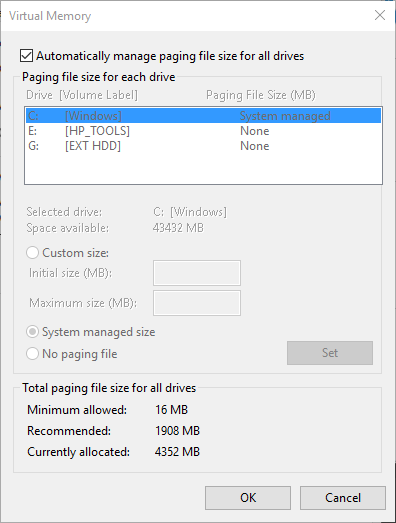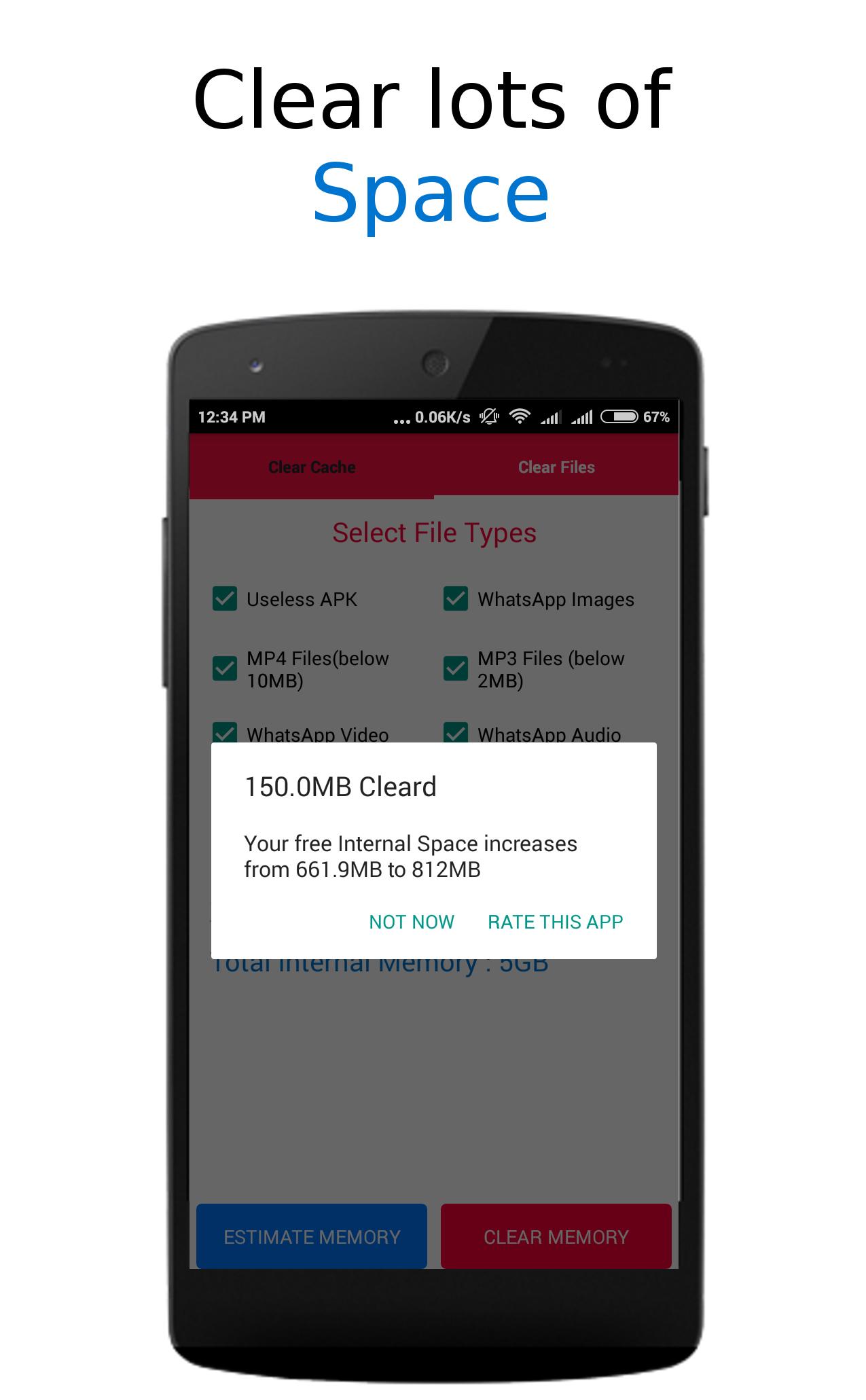Whatsapp can take up quite a bit of storage space on your phone if you do not clear it up. Your phone will lag and it will be taking up too much time. 2 days ago (Pocket-lint) - Here's how to free up storage space on your iPhone: delete stuff. But, whether you do own an old 32GB iPhone or a new 512GB iPhone, there are ways you can save. To eliminate excess formatting, use the format cleaner add-in that is available in Clean excess cell formatting on a worksheet. If you continue to experience issues after you eliminate excess formatting, move on to method 2.
Free up the memory space of your phone. Over time, your phone memory gets filled up with all forms of app data. Some of this data stored on your phone may not be that useful. This data could also be consuming much of your storage space on your phone and limiting you on the kind of useful files you can store in the phone storage. To eliminate excess formatting, use the format cleaner add-in that is available in Clean excess cell formatting on a worksheet. If you continue to experience issues after you eliminate excess formatting, move on to method 2.
Cloud gaming continues to become more popular, but you can’t beat running games locally for speed and reliability—and that’s why the Sony PlayStation 5 comes fitted with an 825GB solid-state drive.
Only around 80 percent of that is actually free space, though (the system software takes up the rest), and it doesn’t take many triple-A games to fill up that available storage.
To make sure your PS5 and its games keep running smoothly, it’s important to know how the internal storage works, and, if necessary, how to clear out some room on the SSD.
Understand your storage status
Checking the current status of your PS5’s internal storage is simple enough: Open up Settings from the home screen, then choose Storage and Console Storage. Right at the top, you’ll see how much space is left on your PS5. You’ll also see all your used storage broken into separate categories, including game data and media files (like screenshots and videos).
You can dig deeper into any category by selecting it, so if you want to know which games are hogging the most SSD space, this is how you find out. To do so, choose Games and Apps to bring up a list of all the games installed on your console, together with the amount of room they’re taking up.
By default, the PS5 will show the games you’ve played most recently at the bottom of the list, making the titles at the top the prime candidates for deletion if you want to free up some room. To change the order of the list, select the Sort arrow icon on the far left. You can organize games by name and size, as well as by usage date.
[Related: Video games feel different on the PlayStation 5, and that’s a good thing]
Back on the Storage screen, you can choose USB Extended Storage to see a breakdown of any USB drives you’ve attached to your PS5—the screens here work in the same way as those in the Console Storage section. It’s also worth noting that if you’ve moved games over from a PS4 console, they’ll appear with a PS4 badge next to them, and their associated saved games will be in a different folder from saved data for your PS5 titles.
How to free up storage on the PS5
If you open up Settings, Storage, Console Storage, and Games and Apps, you can delete a game by selecting it and choosing Delete. On the right, the Available after deleting panel will show you how much room the decision will free up. If you’re sure you want to go ahead, select OK on the confirmation dialog box that pops up.
You can delete other data besides games and apps by going into the other categories on the Console Storage screen. Choose Media Gallery to see all your screenshots, for example. From there, use the Select Multiple tick button on the left to select several images and videos at once, then pick Delete. To scrap a single file, simply select it to open it, then choose the Delete trash can icon.
If you have a compatible external USB drive plugged into your PS5, you can move data there rather than deleting it—but you’ll need to choose whether you want to use the drive for the games themselves, or for captured images and videos. The PS5 will use the drive differently depending on your choice, so you can’t go for both options at the same time.
For storing screenshots, your USB drive will need to be formatted as a FAT32 or ex-FAT drive—most external drives and USB sticks are FAT32-formatted out of the box, so you might not need to do anything to get yours ready for the PS5. If a reformat is needed, you can use a Windows or macOS computer for the job.
[Related: Rip out your computer’s guts and craft an external hard drive]
Plug a FAT32 or ex-FAT USB drive into your PS5, and you can move files to it by going to Settings, Storage, Console Storage, and Media Gallery. Select a file or a group of files, then select the button with the three dots on it, and choose Copy to USB Drive. You can see what’s on your drive by choosing USB on the Media Gallery page.
You can also store saved game data on a USB drive when it’s formatted as FAT32 or ex-FAT, but only from PS4 games that you’ve moved over to your PS5. To do this, open Saved Data from the Storage screen, then pick PS4 Games. Choose Copy to USB Drive at the top, then pick the saved games you want to transfer over.
To move PS5 games to your external USB drive, connect the drive to your console, go to the Storage screen, choose USB Extended Storage and then select Format as USB Extended Storage.
You’ll see a new option right away on the USB Extended Storage screen: Always Install PS4 Games to USB Extended Storage. Enable this, and PS4 titles that haven’t received a PS5 upgrade will be installed on the external drive by default. They can also be run from there, freeing up room on the PS5’s internal storage.
PS5 games work a bit differently, whether they’re exclusive to the newer console or have been upgraded from their PS4 versions. You can move these games to USB storage, but you can’t run them from there—you’ll need to copy them back when you want to play them again. This is a bit of an inconvenience, but it’s quicker than reinstalling a game from a disc or the cloud.

[Related: Sony is bringing the best part of the PS5 to VR]

From Storage, choose Console Storage, and then Games and Apps. You can then pick Move PS4 Content or Move PS5 Games to transfer games over to the drive. Alternatively, go to the Game Library from the home screen, select a game, press the Options button (with the three lines above it), and choose Move to USB Extended Storage.
There’s one more option we haven’t talked about yet: cloud storage. If you subscribe to PlayStation Plus ($10 a month, $25 a quarter, or $60 a year), you can keep your saved games in the cloud, freeing up room on your console. If you’re a subscriber, you can use the Upload to Cloud Storage button on the Saved Data screen in Console Storage.
Help is coming

The PS5 storage situation will be improving soon: The console comes with an NVMe SSD expansion slot, and eventually you’ll be able to plug an external drive into this port. That drive will then be able to both store and run PS5 games. At the time of writing though, Sony has yet to enable this feature.
The issue is the read and write speeds provided by external drives. Only the very latest NVMe technology can match the performance of the drive inside the PS5, so only an NVMe SSD drive can load games fast enough on the console. That’s not a problem for playing older PS4 games or for storing saved games.
Sony has promised to enable the NVMe SSD slot in a future firmware upgrade, but it hasn’t been any more specific than that. So, the waiting game continues. When the feature does go live, Sony also plans to provide a list of NVMe SSD devices that are officially compatible with the PS5, so you can make sure you’re buying the right hardware.
How To Free Up Memory On Computer
MORE TO READ
